Across cultures, food is a way to bring togetherness to a group and celebrate community. But more than that, it’s one of a healthy human’s basic needs, along with water and shelter. Food is essential for every person to survive and thrive.
Yet in recent years, the United Nations was warning of a
global food security crisis. Despite all the world’s resources, food security or reliable access to enough affordable, nutritious food – is a pressing issue in multiple countries.
As a global community, we have the ability to feed every human being. Yet developments such as the crisis in Ukraine, armed conflicts in multiple countries, climate change and economic instability have left millions on
the brink of famine.
In this article, we’ll explain the basics of food security. We’ll look at how it impacts adult and child health, agriculture, climate change and women’s empowerment. You’ll learn why food security is important and what we can do to improve it. And we’ll explain some of the causes of the global food crisis.
- What is food security?
- Why is food security important?
- What are the four types of food security?
- What does food security look like in Canada?
- How can countries improve food security?
- How has COVID-19 impacted food security globally?
- How do other global issues impact food security around the world?
- What can I do to help?
1. What is food security?
The Food and Agriculture Organization’s (FAO) food security definition is when “all people, at all times, have physical and economic access to sufficient, safe and nutritious food to meet their dietary needs and food preferences for an active and healthy life.”
In other words, food security is having consistent, reliable access to safe, nutritious food. When the availability, accessibility, nutritional quality and longer-term stability of food sources become strained or non-existent, “food insecurity” exists.
“Zero hunger” remains one of the most rigorous of the world’s Sustainable Development Goals. While there has been a steady decline in global hunger in past decades, the year 2015 saw numbers rise again. By 2022, up to an estimated 783 million people were dangerously hungry. Experts noted that if recent trends continue, this number will balloon to more than 840 million by 2030.
You may be wondering, “Can’t we just produce more food?” But issues around food security are complex, to say the least.
Technically, we are producing enough food to feed the world’s entire population. Yet millions are undernourished. Food security can be disrupted by many things such as armed conflict, climate change, economic and political instability and natural disasters. In the last few years, the COVID-19 pandemic has joined that list.

In 2021, Haiti was devastated by a 7.2-magnitude earthquake that killed 2,200 people, injured 12,000, and destroyed 100,000 homes and 130 schools. This devastating event is part of why Haiti faces one of the highest levels of food insecurity in the world. Photo: Edson Lubin
2. Why is food security important?
“Access to safe, nutritious and sufficient food is a basic human right, with priority given to the most vulnerable. Apart from basic nutrition, food security is linked to economic stability, long-term health, women’s empowerment and the environment.
Food security impacts our health - especially children’s.
Research reveals that food insecurity can result in ongoing short and long-term health problems. The first 1000 days (from conception to age two) of a child’s life are of critical importance for their healthy growth and development.
For children, severe food insecurity has been linked to chronic health conditions like stunting, wasting and anemia. A diet lacking enough calories, protein, vitamins and minerals will impede a child’s growth and development from before they’re born up until adolescence.
A pregnant mother’s malnutrition can lead to low birthweight, infant mortality, preterm delivery and slow cognitive development for her baby.
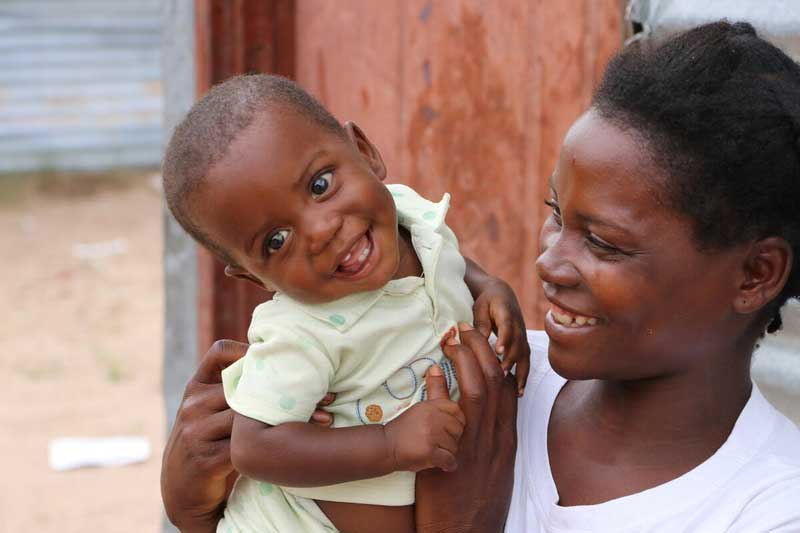 Beto, now 12 months old, is a playful, happy child in good health. With help from World Vision, he recovered from severe malnutrition. Photo: Susy Sainovski
Beto, now 12 months old, is a playful, happy child in good health. With help from World Vision, he recovered from severe malnutrition. Photo: Susy Sainovski
Food security depends on agriculture.
You may have heard the phrase “farmers feed families” urging us to “buy local” more often. Why should we do this?
Right now, up to 811 million people in the world go to sleep hungry every night. Since 2019, the number of people suffering from acute food insecurity has more than doubled from 135 million to 345 million. And over 40 million people across 51 countries are facing emergency levels of hunger.
With education and support, farmers, forestry and fishery workers can provide nutritious food for themselves and their communities.
Organic agricultural practices that have access to proper resources and learn best practices are more likely to generate much higher crop yields. This allows farmers to secure enough for their own needs and produce enough to sell in local markets. This improves the family’s livelihood, strengthens community resilience and furthers the local economy.

Caston, age 2, running around his family’s garden. His father, Milton, is a farmer who received training on high-yield agricultural techniques from World Vision in Zambia. Photo: Laura Reinhardt
Food security is tied to climate change.
The world’s ecosystems are experiencing rapid change and often, immense damage. Climate change is putting even more pressure on the resources we depend on. When natural disasters like droughts, floods and insect infestations grow in frequency and severity, more people go hungry. Many rural families can no longer make ends meet on their land, forcing them to migrate to cities in search of opportunity.
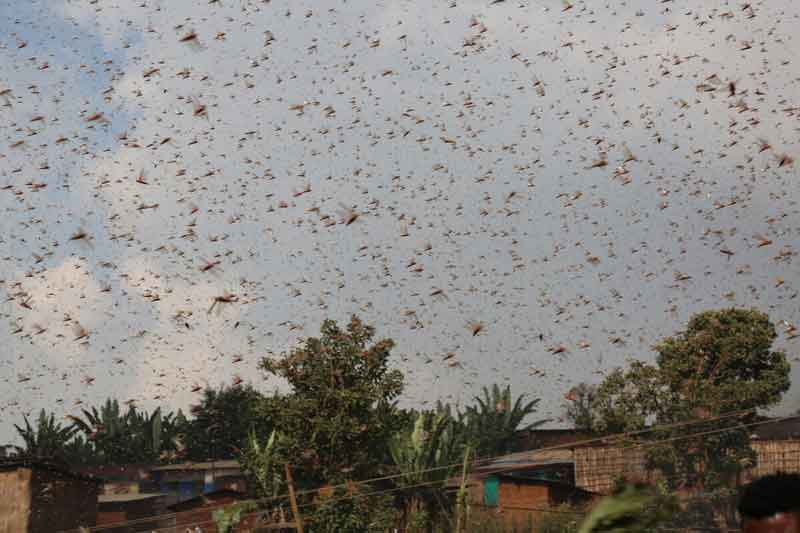 A 2022 report by Red Cross described Ethiopia’s worst desert locust invasion in 25 years. Photo: World Vision
A 2022 report by Red Cross described Ethiopia’s worst desert locust invasion in 25 years. Photo: World Vision
Climate-related disasters – including extreme heat, droughts, floods and storms – are more frequent than ever before, the
World Meteorological Organization noted in 2022. These disasters
harm agricultural productivity, which means food availability suffers. With this comes a domino effect, causing food prices to skyrocket and income losses that prevent people from being able to afford food.
Food security empowers women, families and future generations.
“When women have an income, [they] dedicate 90% to health, education, to food security, to the children, to the family, or to the community. So, when women have an income, everybody wins.
- Michelle Bachelet, United Nations Commissioner on Human Rights
Women typically start with fewer advantages than men, especially when it comes to
nutrition, money and resources. This translates to poorer health for women and less of a say in decisions that keep their families and communities fed, nourished and healthy. But when they are provided with resources and opportunities, women are more likely to direct most of what they have toward helping others.
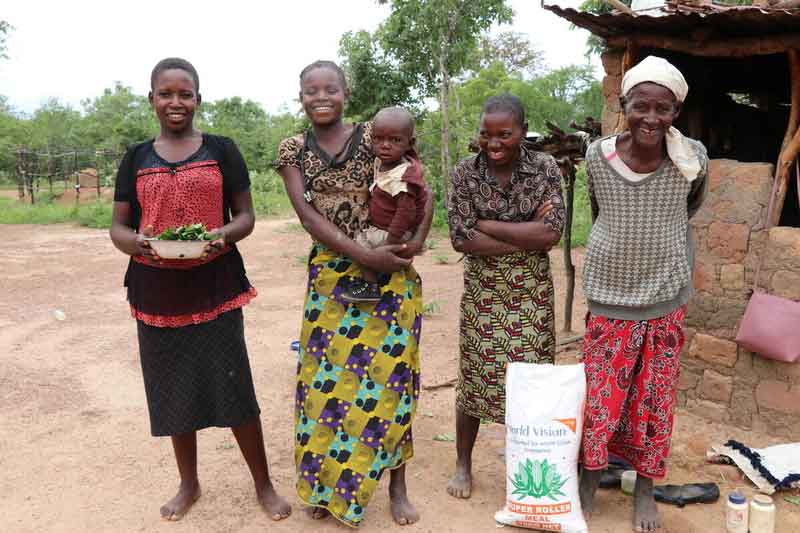 Zambia is prone to droughts, making it especially vulnerable to food insecurity. Most farming families rely on recycled seeds from the previous harvest to plant crops. Once they received seeds and crop starters, families who were once rationing one meal a day had three meals a day. This female-headed household is one of them. Photo: World Vision
Zambia is prone to droughts, making it especially vulnerable to food insecurity. Most farming families rely on recycled seeds from the previous harvest to plant crops. Once they received seeds and crop starters, families who were once rationing one meal a day had three meals a day. This female-headed household is one of them. Photo: World Vision
An
FAO study estimates that closing the gender gap helps empower women, which in turn, contributes to food security. Such is the case in developing countries where women don’t have the same access to agricultural resources as men. Women face higher levels of food insecurity than men across countries, especially since the outbreak of the COVID-19 pandemic.
Giving women access to resources like land, credit, machinery or chemicals could close the gap in food insecurity between men and women by 57 per cent, according to the FAO. Developing countries can also benefit from increased
gender-balanced agricultural production in the long run.
When we give women the tools and support they need to take the lead in providing food for their households, everyone benefits. Feeding a mother and teaching her how to grow food means nourishing her family – wisdom she can pass on to future generations.
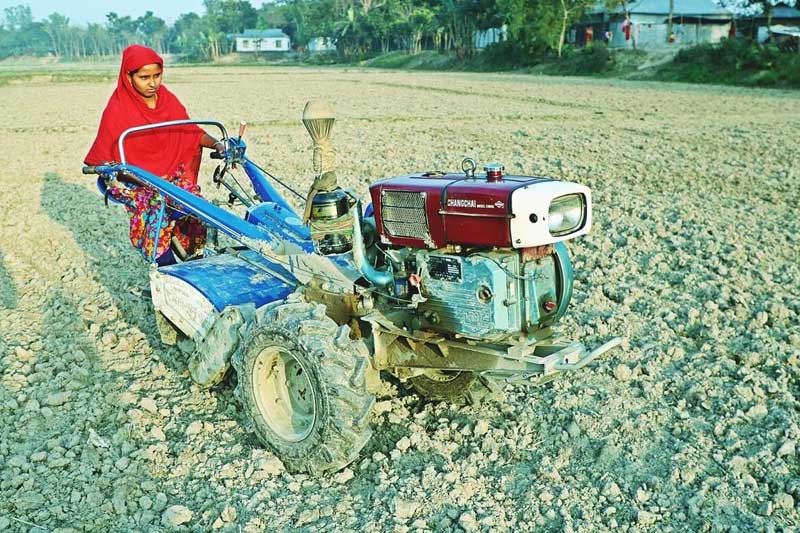 Giving women agricultural resources leads to more financial independence, better health and more food on the table. Photo: Aboni Albert Rozario
Giving women agricultural resources leads to more financial independence, better health and more food on the table. Photo: Aboni Albert Rozario
So, how can we contribute to
women’s empowerment through sustainable food security? According to a
report from the International Institute for Sustainable Development, we can:
- Nurture production practices for diverse nutrition and female labour.
In many areas of agriculture, men and women are responsible for different crops, and this division of labour is often gendered. “Development organizations working on the ground can promote food security and women’s empowerment by promoting the use of female-grown crops,” says Cristina Larrea, Head of the Sustainability Standards for the Economic Law and Policy Program. “This includes new, nutrient-dense crops, such as bananas.
- Promote women’s independence, especially in financial decisions.
Organizations working with farmers can take a gender-transformative approach to improve food security in households by promoting women’s decision-making. Economic empowerment for women ultimately boosts the entire family’s food security, health and wellbeing.
- Seek opportunities to address gender bias in agricultural settings.
“Cash crops are typically overseen by men,” Larrea says, which can unintentionally reinforce gender bias. This is just one example of the many seemingly insignificant behaviours and systems that can be addressed to uplift the rights of women. If more time can be invested in learning local gender power dynamics, a smarter way to grow and sustain agriculture can be established.
3. What are the four types of food security?
While there is a main definition of food security, we must also understand the
four aspects of food security. In order to achieve full food security in a community, all four must be addressed sufficiently and simultaneously.
Food availability
Food availability refers to the actual physical production and supply of safe and nutritious food at a given time and place. This can mean anything related to the level of production and trade of food in a community.
Access to food
This component questions whether or not a community is able to access and therefore eat available food. Access can refer to anything like purchasing power to buy food or other social aspects that affect access (like gender equality and social norms).
Food utilization
Utilization addresses the way the body is able to make the most of nutrients in available food. Being able to utilize food well is the result of best practices in food preparation, proper storage, feeding and diet—anything that might affect having enough consumption and digestion of food.
Stability of food systems
Food security is all tied together based on the stability of the other three dimensions over time. Even with sufficient food intake, a household might still be food insecure if they don’t have consistent access to food.
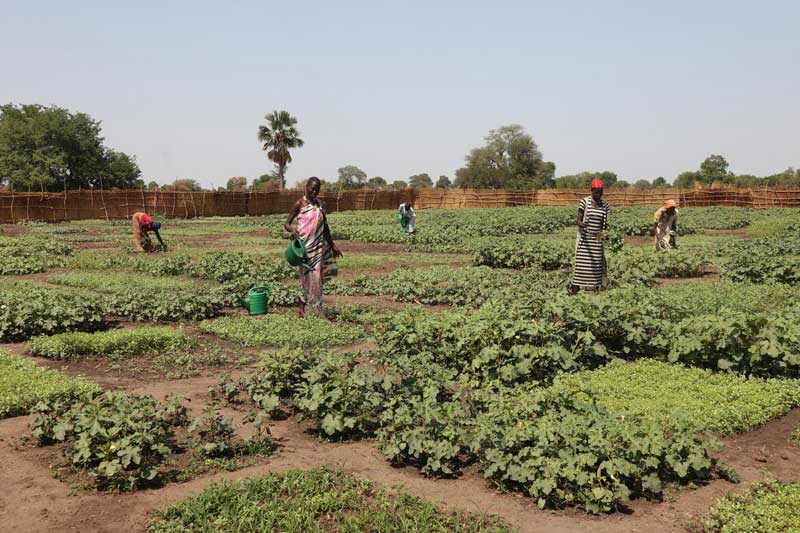 Farmers in South Sudan receive training from World Vision Canada on growing food-producing plants throughout the year and not just during the rainy season. Photo: Scovia Faida Charles
Farmers in South Sudan receive training from World Vision Canada on growing food-producing plants throughout the year and not just during the rainy season. Photo: Scovia Faida Charles
4. What does food security look like in Canada?
Food security in Canada may not be as turbulent as other countries, but factors such as inflation and COVID-19 have significantly impacted food security in the country.
According to a 2022 Statistics Canada report, around 18.4 per cent of people in Canada’s 10 provinces face food insecurity. The percentage of food-insecure households has risen in every province—an increase since pre-COVID-19 data in 2019.
Research from Second Harvest shows that the number of people served by food banks and other nonprofit groups is anticipated to increase by 60 per cent in 2023.
5. How can countries improve food security?
Here are some of the ways we can tackle food insecurity:
- Give immediate hunger relief. Whenever possible, offer food accessibility to keep children and families alive and safe from extreme malnutrition. If countries are unable to gather and distribute nutritious food to their citizens, accepting help from charities or donor nations is a first step.
- Improve gender equality. In many regions of the world, girls and women often eat least, last and of poorer-quality food. In 2020, World Vision and the Canadian government launched a groundbreaking new framework, directly addressing the systems and norms which keep girls and women malnourished. Steps like these are critical to ensure women’s role in improving food security.
- Offer education and resources for agriculture. Teaching families how to farm effectively during drought – plus providing resources such as drought-resistant seeds – can help reduce the threat of food crisis. It’s particularly important to include women in this. Improved food production can help families, communities and the country’s economy.
- Work toward addressing root causes. With any chronic issue, many interventions are only temporary. This article lists some of the root causes of food insecurity.
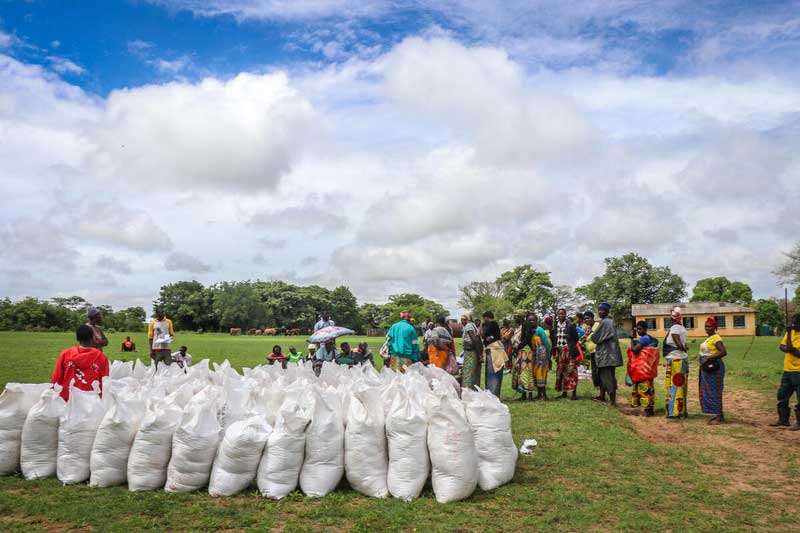 A food distribution day in Zambia. The goal was to reach 97,716 households in the South and Western regions. Photo: World Vision
A food distribution day in Zambia. The goal was to reach 97,716 households in the South and Western regions. Photo: World Vision
Since food security is tied to poverty, healthcare and other complex issues, there is no simple answer. We do know that the world was making strides toward ending hunger in response to the UN’s
Sustainable Development Goals, but of course, new challenges have arisen. Being educated on these issues can help get to the core of the problem and equip governments and world bodies to work toward better solutions.
6. How has COVID-19 impacted food security globally?
Pandemic-related lockdowns closed businesses and community markets alike, driving millions of the world’s people into hunger and poverty. According to the World Food Programme,
276 million people were left facing severe hunger due to COVID-19.
“COVID-19 is potentially catastrophic for millions who are already hanging by a thread,” said the
World Food Programme’s Arif Husain in 2020. “It is a hammer blow for millions more who can only eat if they earn a wage.”
As the economies floundered, fewer and fewer people had ways to earn that wage in developing countries. Families exhausted their savings. With supply chains disrupted, food prices soared. Against the backdrop of pre-pandemic threats such as conflict and severe weather patterns, COVID-19 created a severe impact on food security.
What’s even more frightening is the pandemic’s aftershock effects and its threat to children. When parents die or fall ill, there is no one to care for their children. Children are left vulnerable to hunger, abuse and even child marriage.
Even before the pandemic, up to
30 million children a year were vulnerable to illnesses like malaria and malnutrition. It’s likely that more children will die from residual impacts brought on by COVID-19 than from the virus itself.
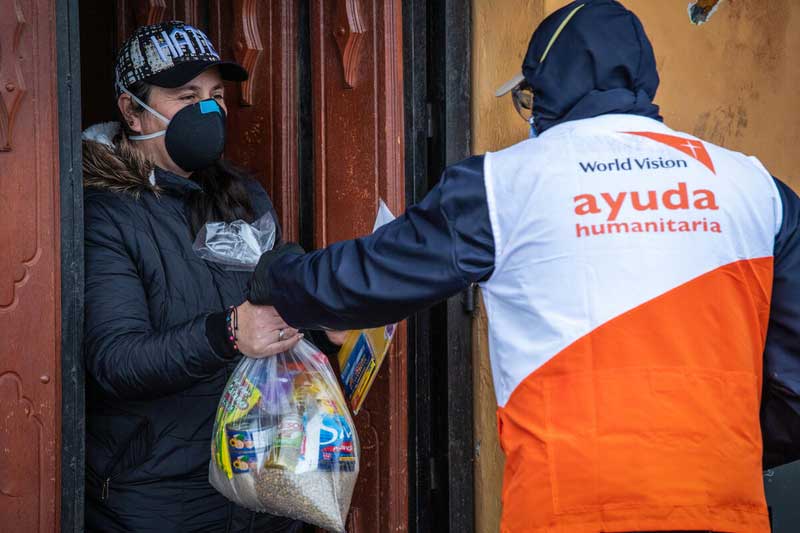 Care kits were distributed to sponsored children and their families in Ecuador. Photo: Chris Huber
Care kits were distributed to sponsored children and their families in Ecuador. Photo: Chris Huber
7. How do other global issues impact food security around the world?
While COVID-19 dramatically contributed to the worsening of food security, millions of people were already suffering. Those most at risk were countries affected by conflict, economic crisis and climate change, according to the
Global Report on Food Crises. The Democratic Republic of the Congo, Ethiopia, Afghanistan, Nigeria, Yemen, Myanmar, Syria, Sudan, Ukraine and Pakistan are the 10 most vulnerable.
In areas of conflict, there is often a fight over the control of important factors in food production such as land and water. This affects food accessibility and makes it harder for people to secure food to feed their families. Logistics is another area of concern, especially for food items and raw materials that are not readily available locally.
A prime example of how conflict impacts food security is the crisis in Ukraine. The situation contributes to the
surging costs of globally traded food commodities given that Ukraine is one of the world’s biggest exporters of grains. Moreover, the economic sanctions imposed on Russia by several Western countries have affected the price of oil per barrel. With product exports strained and the prices of commodities already high due to post-COVID demand, even life essentials are out of reach for millions of people.
Climate change and extreme weather conditions are also seen as major drivers of hunger. Such is the case in Somalia, where the worst drought in decades has left
millions of Somalis struggling to find food, even leaving their communities behind to search for food and work.
8. What can I do to help?
World Vision has programs in place with food security at the forefront. These are systems that meet children, families and communities where they’re at by placing your donor dollars where they’re needed most.
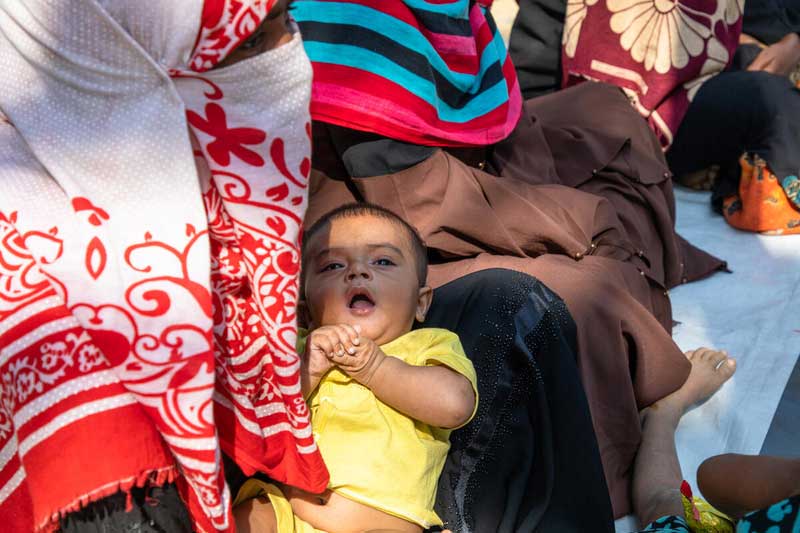 Farida is part of a new mother’s group through World Vision in Bangladesh. “We are changing our food habits [by] bringing variety in our meals, especially for our children,” she says. “Traditionally, we avoid certain foods during pregnancy that we believe are not good for babies. Now we know that pregnant women should eat all kinds of vegetables, fish and meat for nutrition.’’ Photo: World Vision
Gift Catalogue
Farida is part of a new mother’s group through World Vision in Bangladesh. “We are changing our food habits [by] bringing variety in our meals, especially for our children,” she says. “Traditionally, we avoid certain foods during pregnancy that we believe are not good for babies. Now we know that pregnant women should eat all kinds of vegetables, fish and meat for nutrition.’’ Photo: World Vision
Gift Catalogue offers ways to improve families’ livelihoods and provide emergency food when needed. Gifts include
emergency food,
nutritious school meals,
crop seeds for farmers and many others.
Child Sponsorship is a monthly pledge that empowers children and their families by providing access to basics like food, clean water, education and health care. Because of our community-focused solutions, for every child you help, four more children benefit, too.
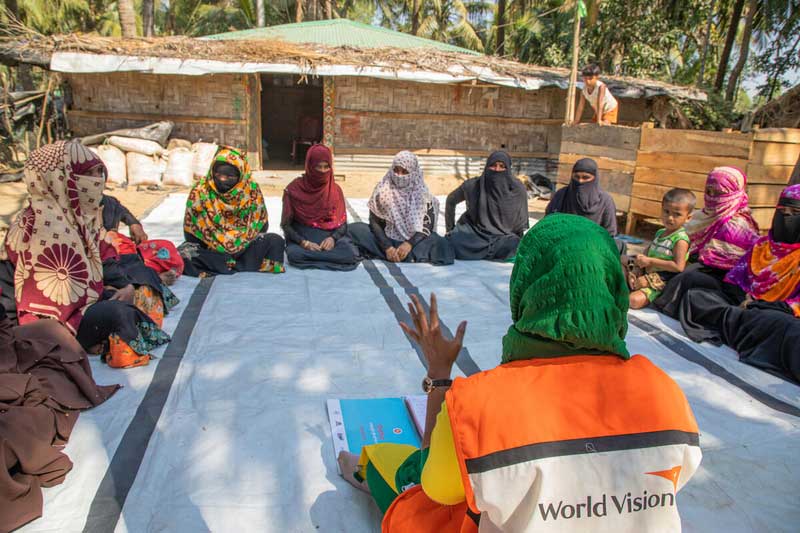 Farida is part of a new mother’s group through World Vision in Bangladesh. “We are changing our food habits [by] bringing variety in our meals, especially for our children,” she says. “Traditionally, we avoid certain foods during pregnancy that we believe are not good for babies. Now we know that pregnant women should eat all kinds of vegetables, fish and meat for nutrition.’’ Photo: World Vision
Updated by Karen-Luz Sison, Charizze Abulencia and Deborah Wolfe
Farida is part of a new mother’s group through World Vision in Bangladesh. “We are changing our food habits [by] bringing variety in our meals, especially for our children,” she says. “Traditionally, we avoid certain foods during pregnancy that we believe are not good for babies. Now we know that pregnant women should eat all kinds of vegetables, fish and meat for nutrition.’’ Photo: World Vision
Updated by Karen-Luz Sison, Charizze Abulencia and Deborah Wolfe